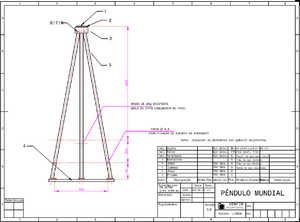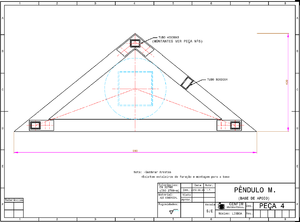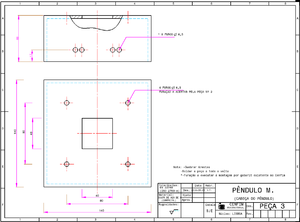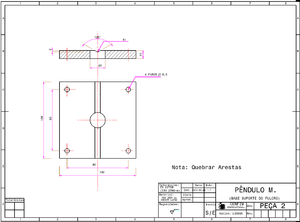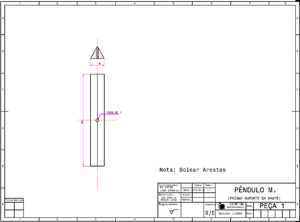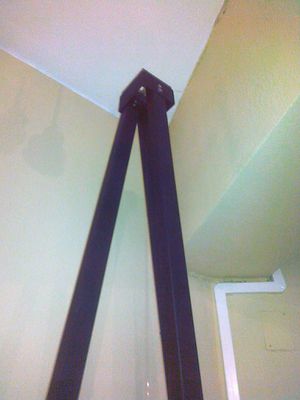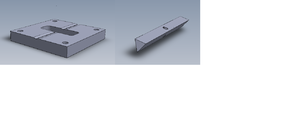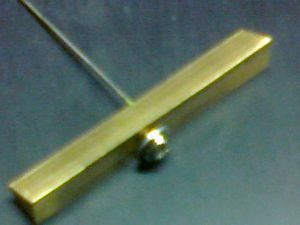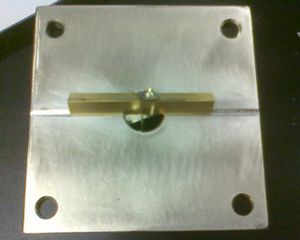Difference between revisions of "Multiple polarizers experimental apparatus"
| Line 45: | Line 45: | ||
Once the support structure is in place, is necessary to calibrate the absolute position of each polarizer; effectively all the polarizers will have a small offset giving a systematic error. It is important to note these angular value that maximizes the transmissivity. | Once the support structure is in place, is necessary to calibrate the absolute position of each polarizer; effectively all the polarizers will have a small offset giving a systematic error. It is important to note these angular value that maximizes the transmissivity. | ||
| − | The first fixed | + | The first polarizer is fixed and shall be positioned with a couple of degrees in order to avoid starting the experiment from a maximum, allowing for an easily observation of such maxima. Consider to have it around ~15º to 30º and well secured, eventually with glue. |
| − | Then start the calibration procedure by inserting the second polarizer and rotating it till the | + | Then start the calibration procedure by inserting the second polarizer and rotating it till the maximums are detected and measured (usually two). Take note of their value and leave the second polarizer at rest in one of such that position. Now insert the third polarizer and repeat the procedure for the maximums detection and do this for the rest of them. |
| + | Every time a hard film or lens is installed it has to be firmly fixed or glued. If glue is used it ''must not damage the polarizers film''. | ||
You will end up with a table of maximum transmission angles, leading to the reference value of maximum intensity in the cascade of polarizers. | You will end up with a table of maximum transmission angles, leading to the reference value of maximum intensity in the cascade of polarizers. | ||
Revision as of 08:30, 2 May 2025
Contents
Apparatus description
The setup for the construction of the multiple polarizers twin experiment is composed of three main components: (i) the supporting 3D printed plastic parts whose schematics are available here, (ii) a raspberry Pi running the control software over the internet and performing the video streaming and (iii) the low-level slave controller electronics comprising the sensing and the experiment motorisation.
The following drawings document the construction of the plastic parts:
descrição dos desenhos explodidos
Optical path
incluir esquema da optica
Optical path alignment
The main body of the device has the light propagating in parallel rays through the cascade of polarizers. Those rays later are focused in the sensor (photo-diode). It is crucial for a good signal-to-noise reading to have the system perfectly aligned. For that end, the linear position of the emitting LED and the photo-diode receiver can be adjusted according to the following procedure:
- Firstly assemble the system lens and the light source (LED);
- Energize the LED and follow the emerging circular image from the output, eg. projecting it in a wall a couple of meters apart;
- Move the LED position in order to have an output image the closer to the size of the exit circle (~30mm);
- Install the structure for the cascade of polarizers without any lens or hard film in it;
- Put in place the second collimating lens in order to focus the light in the photo-diode;
- Using a voltmeter for reading the collected light intensity to the photo-diode terminals, move back and forward the photo-diode position in order to maximize the signal;
- Firmly glue the light source and photo-diode positions in their final position.
Optical path calibration
Once the support structure is in place, is necessary to calibrate the absolute position of each polarizer; effectively all the polarizers will have a small offset giving a systematic error. It is important to note these angular value that maximizes the transmissivity.
The first polarizer is fixed and shall be positioned with a couple of degrees in order to avoid starting the experiment from a maximum, allowing for an easily observation of such maxima. Consider to have it around ~15º to 30º and well secured, eventually with glue. Then start the calibration procedure by inserting the second polarizer and rotating it till the maximums are detected and measured (usually two). Take note of their value and leave the second polarizer at rest in one of such that position. Now insert the third polarizer and repeat the procedure for the maximums detection and do this for the rest of them. Every time a hard film or lens is installed it has to be firmly fixed or glued. If glue is used it must not damage the polarizers film.
You will end up with a table of maximum transmission angles, leading to the reference value of maximum intensity in the cascade of polarizers.
Later, when performing the experiments this values of offsets must be consider in order to eliminate the systematic error of the system.
